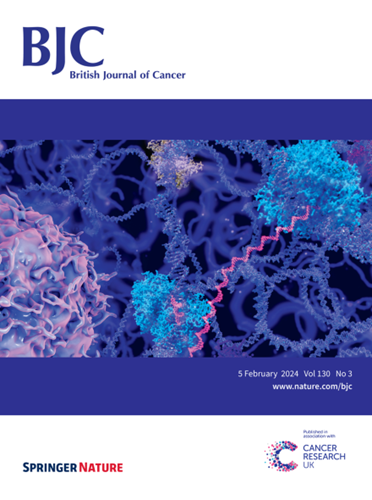Germline BRCA1/2 status and chemotherapy response score in high-grade serous ovarian cancer
IF 6.4
1区 医学
Q1 ONCOLOGY
引用次数: 0
Abstract
High-grade serous ovarian cancer (HGSOC) can be treated with platinum-based neoadjuvant chemotherapy (NACT) and delayed primary surgery (DPS). Histopathological response to NACT can be assessed using Böhm’s chemotherapy response score (CRS). We investigated whether germline BRCA1/2 (gBRCA1/2) genotype associated with omental CRS phenotype. A retrospective study of patients with newly diagnosed FIGO stage IIIC/IV HGSOC prescribed NACT and tested for gBRCA1/2 pathogenic variants (PVs) between September 2017 and December 2022 at The Christie Hospital. The Cox proportional hazards model evaluated the association between survival and key clinical factors. The chi-square test assessed the association between CRS3 (no/minimal residual tumour) and gBRCA1/2 status. Of 586 eligible patients, 393 underwent DPS and had a CRS reported. Independent prognostic factors by multivariable analysis were gBRCA1/2 status (PV versus wild type [WT]), CRS (3 versus 1 + 2), surgical outcome (complete versus optimal/suboptimal) and first-line poly (ADP-ribose) polymerase-1/2 inhibitor maintenance therapy (yes versus no) (all P < 0.05). There was a non-significant trend for tumours with a gBRCA2 PV having CRS3 versus WT (odds ratio [OR] = 2.13, 95% confidence intervals [CI] 0.95–4.91; P = 0.0647). By contrast, tumours with a gBRCA1 PV were significantly less likely to have CRS3 than WT (OR = 0.35, 95%CI 0.14–0.91; P = 0.0291). Germline BRCA1/2 genotype was not clearly associated with superior omental CRS. Further research is required to understand how HGSOC biology defines CRS.

胚系 BRCA1/2 状态与高级别浆液性卵巢癌化疗反应评分。
背景:高分化浆液性卵巢癌(HGSOC)可通过铂类新辅助化疗(NACT)和延迟初次手术(DPS)进行治疗。对新辅助化疗的组织病理学反应可通过伯姆化疗反应评分(CRS)进行评估。我们研究了种系BRCA1/2(gBRCA1/2)基因型是否与网膜CRS表型相关:回顾性研究:2017年9月至2022年12月期间,克里斯蒂医院对新诊断的FIGO IIIC/IV期HGSOC患者进行了NACT处方和gBRCA1/2致病变体(PVs)检测。Cox比例危险模型评估了生存率与主要临床因素之间的关系。卡方检验评估了CRS3(无/极小残留肿瘤)与gBRCA1/2状态之间的关联:在586名符合条件的患者中,393人接受了DPS并报告了CRS。通过多变量分析得出的独立预后因素包括:gBRCA1/2状态(PV与野生型[WT])、CRS(3与1 + 2)、手术结果(完全与最佳/次佳)和一线多聚(ADP-核糖)聚合酶-1/2抑制剂维持治疗(是与否)(所有P均为0):种系 BRCA1/2 基因型与网膜 CRS 优越性无明显关联。要了解 HGSOC 生物学如何定义 CRS,还需要进一步的研究。
本文章由计算机程序翻译,如有差异,请以英文原文为准。
求助全文
约1分钟内获得全文
求助全文
来源期刊

British Journal of Cancer
医学-肿瘤学
CiteScore
15.10
自引率
1.10%
发文量
383
审稿时长
6 months
期刊介绍:
The British Journal of Cancer is one of the most-cited general cancer journals, publishing significant advances in translational and clinical cancer research.It also publishes high-quality reviews and thought-provoking comment on all aspects of cancer prevention,diagnosis and treatment.
 求助内容:
求助内容: 应助结果提醒方式:
应助结果提醒方式:


